
THE ATOMIUM IN BRUSSELS
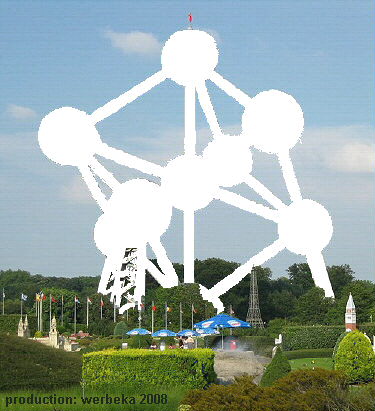
This would be a nice picture of the Atomium. But, believe it or not - it is forbidden to put photos of Belgian pieces of art, sculptures, buildings, etc. onto the internet, if they still are under copyright-protection, that is, if they are taken less than 70 years after the death of the copyrightholder. Copyright is good - a writer has to live of his works - but an architect has already been paid for his, when it is ready - as has a sculptor, whose project has been put in a public place.
One can ask for the copyright of course, but then one has to pay for it, put a copyright-remark and a link to the official page. I don't like stupidity, neither individual nor governmental. That is why I am sorry not to be able to show that nice picture, but what should I do? I hope that this stupid law one day bounces back on its originators. |
Of course I had seen pictures of the Atomium earlier, in tourist brochures and the like. Theoretically I knew as well, that it was big - it is 102 meters high - but when you stand in front of it in reality, it is a very different, much more impressive view.
The Atomium was conceived by a Belgian architect. The reason for building it was the Expo 58, the first World exhibition after WWII. The whole construction weighs 2400 tons. The nine metal globes symbolize the structure of an iron atom, 165 trillion times enlarged. Each of the nine spheres has a diameter of eighteen meters and is connected through twenty three meter long tubes. In the central tube there is an elevator, which takes the visitors in 25 seconds to the sphere at the top, where you can enjoy a panorama view and have a drink in a restaurant.
One had chosen an atom as a symbol, because humanity had entered the atomic age and hoped for a peaceful usage of the nuclear energy. Between 2004 and 2006 the Atomium was entirely renovated.
You have to buy the tickets in a sidebuilding - that is probably done of smart and economical reasons. |
Because when you enter the lowest sphere, you will probably get a shock. The people in the waiting queue stand three times in a spiral around the elevator tube, almost out onto the street. But it looks worse than it really is - and after a short half hour you can enter the elevator. Up at the top you can enjoy the view all around, be it the fountain at the foot of the giant atom or the skyline of Brussels.
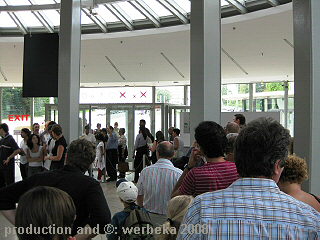 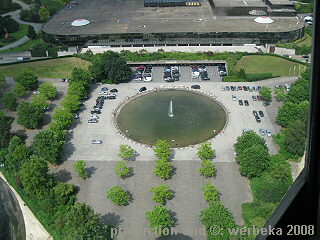
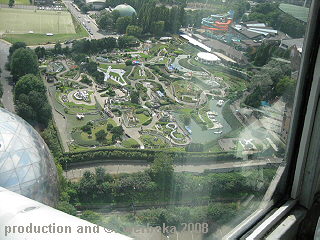 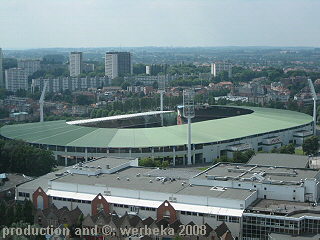
Next to the Atomium there is also the area of Mini-Europe and the Heysel-stadium, which millions of spectators will keep in memory, because of the game between Juventus and Liverpool, when the English hooliganism claimed its first death victim. The stadium's name actually is King-Baudouin-Stadium, but the area, where it is situated, is called Heysel.
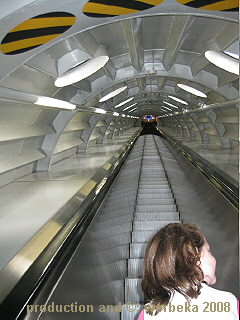 |
When we, after having seen enough, tried to find our way to the other globes, there was none. We had to queue again in order to go down with the elevator. This went much faster, because the number of visitors up there is limited. Back in the lowest globe we soon found moving stairs, which brought us into the next sphere. |
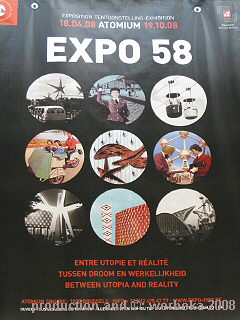 |
In the interior of the Atomium there was of course a retrospective exhibition, 50 years after 1958. You can look at the technique from that age, see where the Expo was situated and naturally a lot of photos from that time.
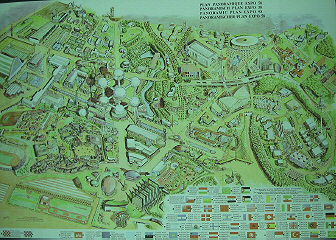 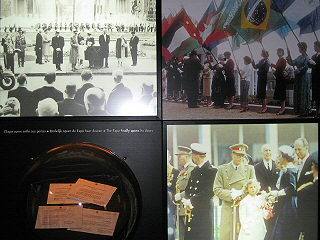
But, to be really honest, my visit there was mainly to have a look at the building - my interest in the retro-exposition came rather far behind.
Copyright Bernhard Kauntz, Wolvertem 2008-2009
Back to  or to the or to the  of of 
last update: 7.3.2009 by webmaster@werbeka.com
|











